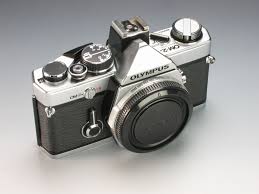 Olympus OM-2 of 1975 Olympus OM-2 of 1975 The impact of a leap in technology is often best measured in the reaction of one's competitors rather than only in market-share or some other basic metric. The Olympus OM series of SLRs are a case in point. While Olympus certainly did grab a nice chunk of market share in the mid 1970's, it was the changes that their fellow manufacturers made in their own designs that define the introduction of the OM-1 as a pivotal point in SLR history. Within five years of the introduction of the mechanical OM-1, followed three years later by the electronic OM-2, the other members of the now Big 5 (Minolta, Pentax, Nikon, and Canon) had all brought out their own downsized and/or lighter-weight models. Five years seems like an eternity in today's marketplace, but back then product cycles normally lasted much longer. Take, for instance, the Pentax Spotmatic. Introduced in 1964, with slight updates in 1971 and 1973, it maintained its layout and dimensions and gained 20 grams of weight until its discontinuation in 1976, 12 years later. The Minolta SR-T 101, which came out in 1966, was produced in the same basic form for 15 years. For over 14 years, the Nikon F hardly changed. Product development also took much longer, without all of the computer modelling and simulation available today. Prototypes were hand-built and tested, and re-built and re-tested many times, before being put into production. So, the fact that within 4 to 5 years these companies all brought out new models, often replacing a full-size model that was only 2 or 3 years old, speaks volumes as to the disruption the OMs caused. One example is Minolta's transition from the XE model cameras to the XD series. In 1974, Minolta introduced the XE, (which coincidentally, was one of the first models it collaborated on with Leitz resulting in the Leica R3) a full-size, 780 gram, beautiful brass-bodied behemoth. Allowing for a minimum two-year development cycle (the Minolta-Leitz agreement came into effect in June 1972, and Minolta was already at work on the XE) it's highly likely that the XE design was finalized before the launch of the OM-1 only a month later. The XE would only last 3 years on the market, being replaced by the XD in 1977. The XD would go on a serious diet, losing 220 grams or a 28% weight reduction from the XE and within 40 grams of the OM-2, its natural competitor in Olympus' lineup. Even more interesting are the dimensions of the XD: 136mm W x 86mm H x 51mm D; the same width to the mm, 3mm taller, and 1mm thicker than the OM-1 & -2. Coincidence? You be the judge ;-). Next up, Pentax, who had prided themselves on producing the lightest and tidiest SLRs among the Big 4. In 1975, Pentax finally brought their lens mount up to date by adopting the K-bayonet mount. The KX was the top-of-the-line, fully manual Pentax. It was a very close match for the OM-1 capability-wise, and even exceeded it in some parameters. Nevertheless, it only lasted two years, and its replacement in the lineup, the MX, was first available only one year later, in 1976. And the MX was 135 grams lighter. And 7mm narrower. And 8.5mm shorter. And 2.5mm thinner. What could possibly have prompted Pentax to prove such a point?! That was the power of the OM-1 :-). Pentax had already realized the need for change before the KX came on the market, but it was too far along in development, and they needed to get the K-mount cameras into production as soon as possible. So the K-bodies were really a stop-gap measure while they accelerated development of the M-bodies. Without the OM-1, Pentax would have still had the lightest SLRs: the KX was 80 grams lighter than the Minolta SR-T 102; 120 grams lighter than the Canon FTb-N; and a sprightly 135 grams lighter than the Nikkormat FT2. In the gallery below you can see the difference between the K-series (represented by the KM) and the M-series (represented by the ME Super). Now we come to Nikon, purveyors of the professional-level heavyweight F & F2 models and their junior brethren, the Niko/Nikkormats (FTn & FT2). Nikon tended to be (and still tends to be ;-)) the most conservative of the big Japanese SLR makers. Their priorities have reflected the desire to have rugged and reliable bodies that could handle pro-level abuse, which led to larger, heavier bodies than those of other manufacturers that catered more to the amateur market. Yet, in 1977, only two years after they had brought out the Nikkormat FT2 as their most advanced mechanical amateur (and pro backup) body, here was a brand new model, the FM. The FM would be the progenitor of one of the longest-lived families in the Nikon stable, the FM/FE/FA series, which were produced into the 21st century. Its most noticeable difference from the FT2? A loss of 6mm in width and height and 200 grams of weight! Ironically, the FM would forgo the Nikkormat's lens mount located shutter speed ring (which Olympus had adopted for the OMs as a space-saving measure) for the more common top-deck mounted dial. The FM and its progeny (the FM2 & FM2n) would prove rugged and reliable enough that they became the ubiquitous backup bodies for Nikon pros through the end of the film era. Reasons why? Their simplicity, fully mechanical shutters, and last but not least, there was less to pack around in a bag than having a second or third F-series body would entail. Thanks to Maitani-san :-). Finally, we have Canon. Their response to Olympus would turn out to be the next revolution in the SLR wars. We'll get into that in more depth another day, but for now let's note the before and after in Canon's auto-exposure models. In 1973, when the OM-1 appeared, Canon introduced its most advanced amateur body, the elegant EF, which came to be known as the Black Beauty. And it was (is) a gorgeous camera! It very much followed the size/weight paradigm of the Nikon EL, which preceded it by a year. And yet, it would only be in production for 4 years. Again, Canon, like the other manufacturers, was forced to adapt to the appetite of photographers for the smaller, lighter SLRs pioneered by Olympus. The AE-1 of 1976 was Canon's answer to the OMs...and every other camera maker's amateur models. It shaved 10mm of width, 9mm of height, and 150 grams from the EF. Where the AE-1 differed from the Olympii was the methods used to reduce dimensions and weight (for better or worse, depending on your point of view). We'll tackle that story next time. Olympus would ride the wave of OM success until the introduction of usable autofocus in 1985, a bit over a decade. But the impact of the OMs would continue...into the world of digital; with the micro 4/3 sensor format, Olympus would again channel Maitani-san by introducing the OM-D series which bear more than a passing resemblance to their classic forebears not only in looks but also in ideology. Yoshihisa Maitani would go on to innovate in compact cameras with his legendary XA compact rangefinder that ignited the eruption in premium (and not-so-premium) compact cameras in the 1980's. To have developed one pivotal or classic camera is a tremendous accomplishment. To have four such designs to one's credit is incredible. Maitani, with his Pen, Pen F, the OMs, and the XA, was truly one of the 20th century's pillars of camera design, whose influence is still felt today. Next time...Computers Come to Cameras References: Special Lecture by Y. Maitani @ www.olympus-global.com Minolta XE User Manual @ www.butkus.org Minolta XD User Manual @ www.butkus.org Pentax KM User Manual @ www.butkus.org Pentax ME Super User Manual @ www.butkus.org Nikkormat FTn User Manual @ www.butkus.org Nikon FM User Manual @ www.butkus.org Canon EF User Manual @ www.butkus.org Canon AE-1 User Manual @ www.butkus.org Olympus OM-2 picture credit: www.wikimedia.commons
0 Comments
Your comment will be posted after it is approved.
Leave a Reply. |
C.J. OdenbachSuffers from a quarter-century and counting film and manual focus SLR addiction. Has recently expanded into 1980's AF point and shoots, and (gack!) '90s SLRs. He even mixes in some digital. Definitely a sick man. Categories
All
Archives
June 2024
|
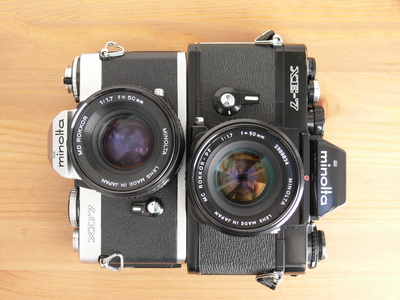
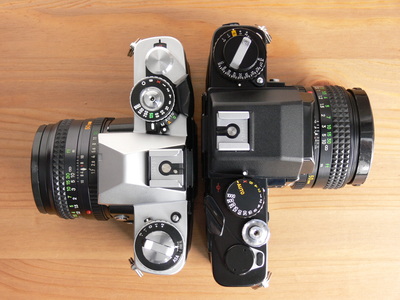
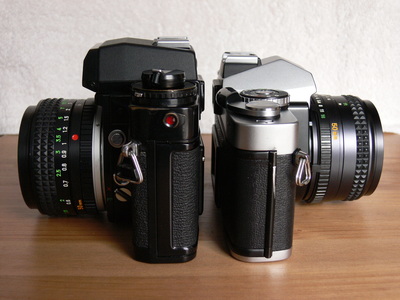
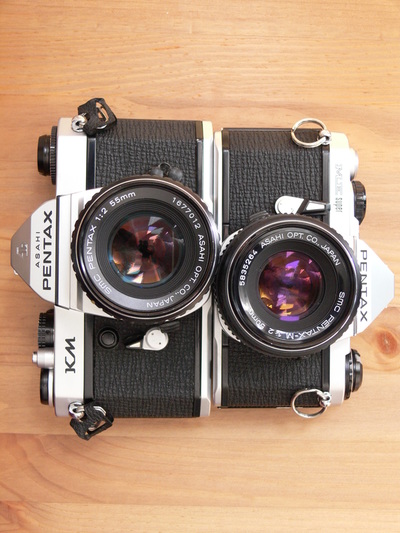
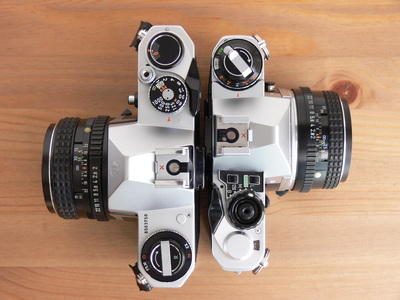
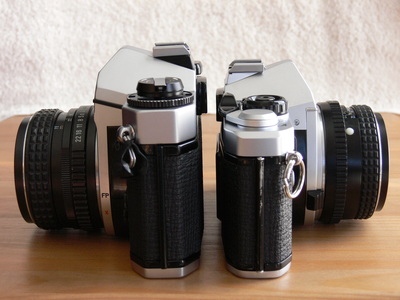
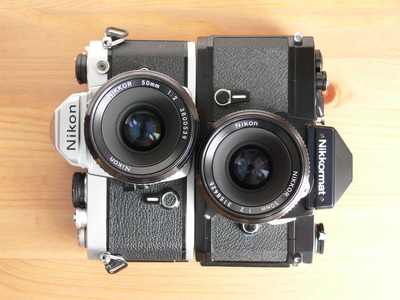
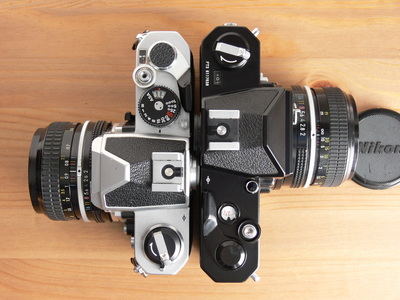
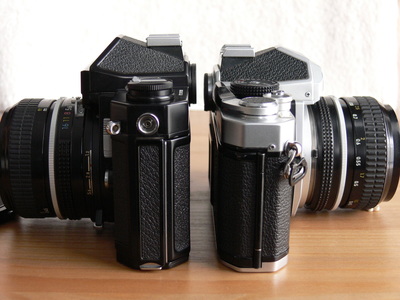
 RSS Feed
RSS Feed